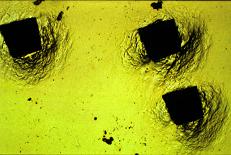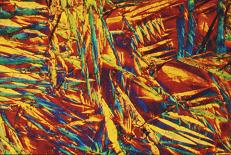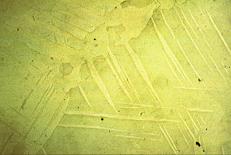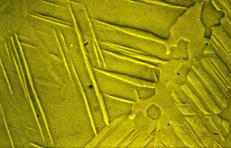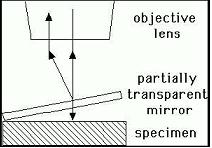
|
Interference microscopy is used quantitatively to detect changes in surface height. The partially transparent mirror splits the incident beam in two. The two beams then interfere to produce fringes whose spacing is equivalent to a height change of half the wavelength of the light used. The picture shows just two beams interfering. This gives a sinusoidal profile to the variation in intensity between fringes, which can make it difficult to locate the precise position of the fringe. The fringes can be sharpened up using multiple beam interferometry, as in the Tolansky image presented below. |
